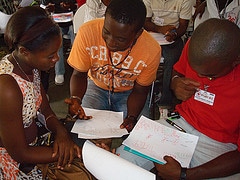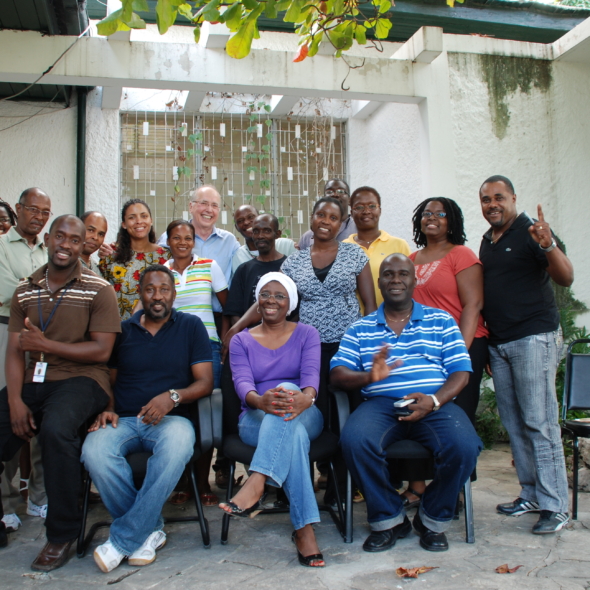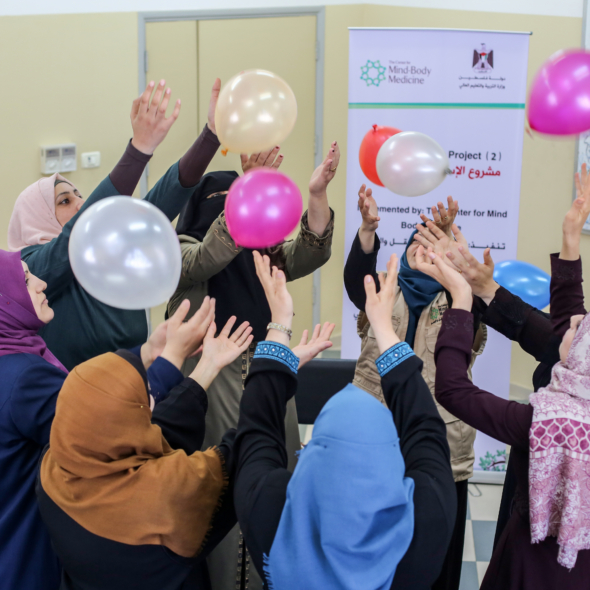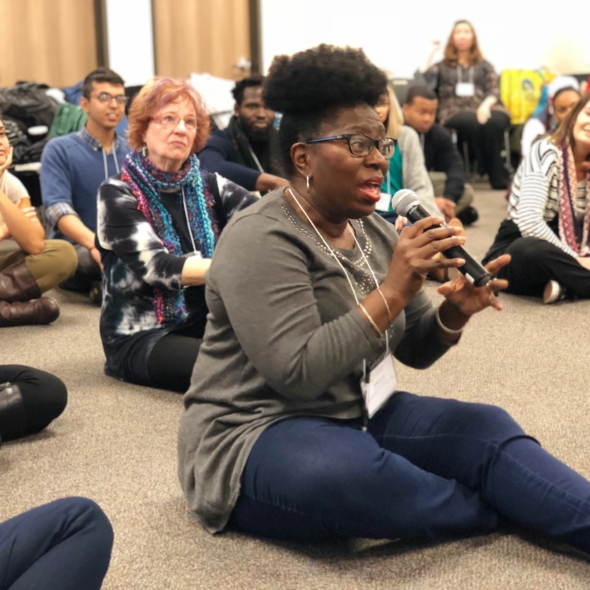I’m not quite sure when or even how it happened but Haiti is starting to feel like home. Not in the sense that I have my family with me, or know where to do grocery shopping, or can lay my hands on the books I love most.
It’s something else, an ease with people, a sense of words and actions contributing to something really good – right now and for the future — a welcome, even an embrace that keeps expanding. It swells from the team around me, and from the 120 people — doctors, psychologists, nurses, midwives, teachers, priests and nuns and voudoun healers — who come to our training with great fidelity and teach the techniques they are learning from us to friends, family, and patients as soon as it is humanly possible. “In order to keep the training inside me always, I have to share it with others,” one young teacher announced this morning.
In the days after Yehlie’s first communion we complete the training we began in December. My ‘small group’ of participants, gathered together again, begins as always with a few minutes of soft belly meditation – slow deep breathing, in through the nose, out through the mouth, with the belly soft and relaxed — quieting our nervous systems, our minds and bodies. And then we “check in”, tell each other what has happened since we last saw each other and share what we are feeling “right now.” Already it is becoming a commonplace for us, a way to regularly connect with those around us, outside as well as within the training. “Check in,” laughs one priest, “is almost now a second religion.”

There are still major problems and issues – almost half of our group is still not living in their homes, and there is abiding sadness for those who have died, but there is more energy for understanding and meeting current challenges.
We discuss the short term memory loss that bedevils several people and makes them apprehensive, even in their thirties or forties, about Alzheimer’s disease. I say it is highly unlikely, that trauma has long been known to obscure memory. And one of the other doctors in the group assures us that her memory – devastated amidst the loss of her brother and her husband — has begun slowly to return: “Sharing my emotions, accepting help from others, permitting my own tears – it as if the memory flows back with them.”
This doctor’s face is no longer constricted in pain as on our last visit, but open, changeable, easy with laughter as well as tears. Many of the faces I see are equally changed. James, who is head of psychology for the National Police, scrupulously kind, but painfully thin and equally serious in December, is ten pounds heavier, relaxed, expansive. And the woman I think of as “the Teacher,” as immobile and expressionless as mahogany in devastated grief at the loss of husband and home two months ago, is now a river of feeling and words.
One participant says, “The earthquake brought us so much pain, but also we are seeing it brings good things to the people who survive. Psychology [i.e. traditional therapy] was useless to me and my community – no one could go because it meant you were crazy. Now with CMBM approach I am helping myself and others too.”
Says another, “On January 12th, the anniversary, when everyone in my church was so tense, I taught them the breathing. And as I relaxed I let myself cry, and found my strength, and then we cried together, my children and my friends. And then I sang a song – I have never led a song any time – and I asked everyone to sing with me and praise god. And we did, three songs, and then we all felt more calm.”
It is so encouraging to see the positive changes in our trainees, and to hear that our participants are taking the techniques back to their homes, churches, workplaces. Giving the people of Haiti practical tools for their own emotional healing, and empowering them to teach these tools to everyone they meet, will, we hope, help the Haitian people heal themselves.



